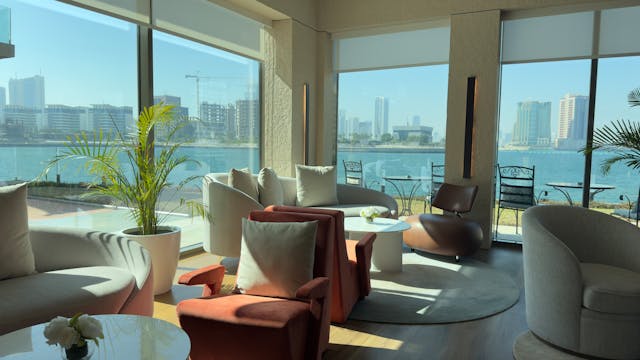Santa Monica offers unique opportunities for commercial property owners, but managing properties in this iconic California city comes with its own set of challenges. With high demand, strict regulations, and evolving tenant expectations, property managers must stay sharp to succeed in this competitive market.
Understanding Local Regulations
Santa Monica is known for its stringent ordinances, and staying compliant is essential. The city enforces specific rules around zoning, signage, parking, and environmental impact. Commercial properties, especially those in prime areas like Third Street Promenade or Montana Avenue, face additional scrutiny.

Effective managers keep a close eye on municipal updates and stay proactive in addressing any compliance concerns. Late permits or unapproved modifications can lead to fines or delays that impact both landlords and tenants. Working with legal experts familiar with the city’s codes ensures smooth operations and prevents surprises.
Navigating Tenant Expectations
The clientele in Santa Monica has high standards. Whether leasing to retail, office, or mixed-use tenants, providing exceptional service is critical. Tenants want properties that reflect the upscale vibe of the area, which means maintaining aesthetics, ensuring modern amenities, and fostering a positive relationship with the landlord.
One common mistake is underestimating the importance of communication. Regular check-ins and responsiveness build trust. Some tenants may request energy-efficient lighting or sustainable upgrades to align with Santa Monica’s eco-conscious culture. Meeting these requests, when feasible, not only retains tenants but can also increase the property’s value.
Maintenance with a Focus on Curb Appeal
Santa Monica’s foot traffic drives business, but it also exposes properties to wear and tear. Maintaining curb appeal is vital, particularly for properties in high-visibility areas. Graffiti, trash, or even unkempt landscaping can tarnish a building’s image and impact leasing rates.
Scheduling regular inspections and employing skilled maintenance crews helps preserve the property’s appearance. In a city where first impressions matter, even a small detail like faded paint or a broken light fixture can deter potential tenants. Staying ahead of maintenance issues protects your investment and keeps tenants satisfied.
Weather and Environmental Considerations
The coastal location adds to Santa Monica’s charm but creates specific challenges for property managers. Salty air accelerates wear on metal and concrete, while coastal winds can damage outdoor spaces. Investing in high-quality materials and scheduling preventative maintenance combats these issues.
Drought conditions also influence water usage policies. Many tenants appreciate properties equipped with drought-tolerant landscaping or water-saving fixtures. Highlighting these features during lease negotiations can make your property stand out.
Competitive Leasing Strategies
Santa Monica’s commercial real estate market is fiercely competitive. Tenants have plenty of options, so properties must stand out to attract and retain high-quality occupants. Flexibility is often the key to securing long-term leases. Offering build-out allowances, negotiating rent adjustments based on business performance, or incorporating shared spaces can tip the scales in your favor.
A strong marketing strategy is equally important. Digital platforms showcasing your property’s amenities, accessibility, and proximity to local landmarks help reach the right audience. Combining professional photography with virtual tours appeals to busy prospects who want to evaluate options quickly.
Building Strong Vendor Relationships
Managing commercial properties effectively requires collaboration with reliable vendors. Santa Monica’s busy market means competition extends beyond leasing; it also applies to securing top-notch contractors for repairs, cleaning, and security.
Building relationships with local service providers ensures faster response times and potentially better pricing. A contractor familiar with your property will deliver consistent results, saving time and avoiding unnecessary back-and-forth communication.
During emergencies, having trusted vendors on speed dial can minimize disruption. Whether it’s a plumbing issue or storm-related damage, quick action protects your property and reinforces your commitment to tenant satisfaction.
Staying Ahead of Market Trends
Santa Monica attracts a mix of established businesses and startups, which creates a dynamic tenant base. Tech companies, boutique retailers, and wellness-focused businesses often lead demand. Understanding these trends helps managers tailor leasing strategies.
Properties that cater to remote work trends, like offering shared workspaces or upgraded internet capabilities, can draw tech-savvy tenants. Retail spaces that embrace experiential shopping elements—pop-ups, interactive displays, or community events—tend to perform better in this market.
Keeping an ear to the ground for shifts in tenant preferences ensures your property remains competitive.
Balancing Costs with Tenant Satisfaction
Profitability hinges on balancing operational costs with tenant needs. Overlooking small expenses can erode margins, while cutting corners on tenant services risks higher turnover rates. Smart budgeting practices help maintain this balance.

Energy-efficient upgrades, while costly upfront, often lead to significant savings. Properties with solar panels or high-efficiency HVAC systems reduce utility expenses and appeal to environmentally conscious tenants. Transparent communication about these investments can also justify rent increases when lease renewals come around.
Personal Experience: Navigating Unique Challenges
Years ago, managing a retail property near the pier taught me the importance of adaptability. An unexpected issue with parking availability during a major local event almost derailed tenant operations for the weekend. Quick thinking—partnering with a nearby lot for overflow parking—kept the tenants satisfied and minimized disruptions.
Santa Monica’s unique mix of tourism, local demand, and regulatory hurdles requires property managers to think on their feet. Each challenge presents an opportunity to learn, refine processes, and strengthen tenant relationships.
Setting Properties Up for Long-Term Success
Success in managing commercial properties in Santa Monica comes down to preparation, responsiveness, and understanding the needs of both tenants and the community. It’s not about waiting for problems to arise but ensuring the property remains a desirable place for businesses to thrive.
